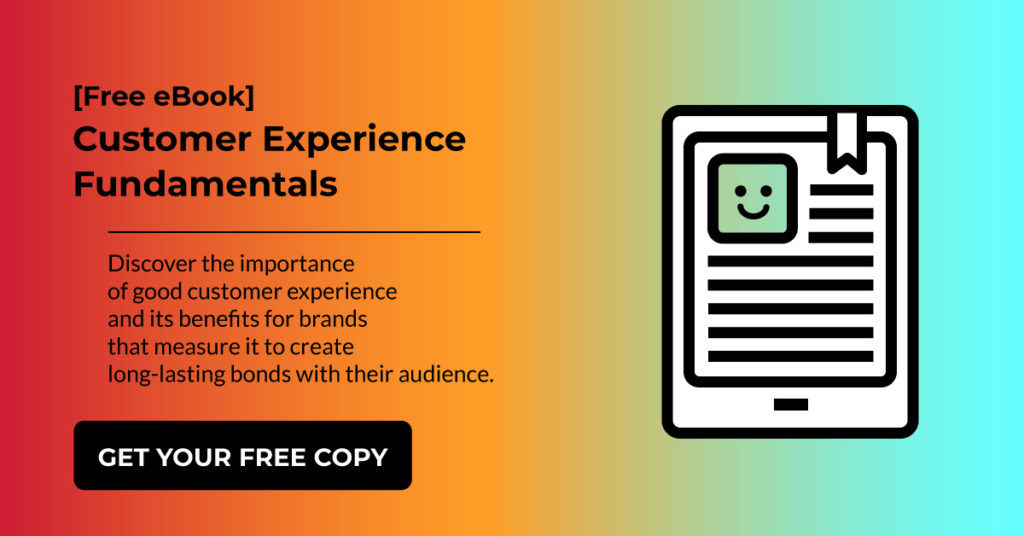Customer Satisfaction: 5 ways to start measuring it

Customer retention, loyalty and profitability: what do they have in common? They are the results of a brand’s efforts to measure and improve its customer satisfaction. But what is the starting point for gauging your customers’ sentiment? Well, it all starts with asking and collecting customer feedback, which you will then analyze and use to strengthen satisfaction levels.
In this post, we will talk about the methods that you can use to make feedback collection and analysis a staple of your customer success strategy.
1. Net Promoter Score (NPS)
Net Promoter Score (NPS) is a customer satisfaction metric that was developed by Fred Reichheld, Bain & Company, and Satmetrix in 2003. It works by asking a quick and easy question, using a 0-to-10 scale:
“How likely is it that you would recommend our company to a friend or a colleague?”
NPS measures customer loyalty and helps to distinguish those who have negative feelings from promoters. And if you opt for a customer feedback software, like e-satsifaction.com, you can get the most out of NPS surveys.
2. Social Media Monitoring
Your customers are social creatures and you should follow their lead… Ignoring their mentions, comments and DMs on your social media accounts does not only aggravate them but it costs you in terms of the insights that you can find there. Plus, feedback through social media is usually given by the customers without you lifting a finger to ask for it and it’s free!
3. SMS/Viber Surveys
Asking for feedback via SMS or Viber works well for surveys concerning the evaluation of a purchase, the delivery process or the quality of product/service (after-sales). Plus, this method is cheaper compared to other alternatives.
4. Email Surveys
Emails can go hand in hand with customer engagement and feedback generation and leave plenty of room for experimentation. The time you send them, their subject lines, tone of voice and choice of content (visual and written) can be optimized to offer you a better response rate. Also, you can try personalizing your emails, a practice that makes customers feel unique and adds to their satisfaction. 5. Customer Satisfaction Score (CSAT)
Customer Satisfaction or CSAT is the metric that tracks how satisfied customers are with their experiences with a brand, product or service.
The question usually used in CSAT surveys is this:
“How satisfied are you with your e-shop?”
Although the word “satisfied” can mean different things to different respondents, CSAT scores paint a pretty coherent picture of how happy or unhappy your customers are. CSAT surveys should also be set up and implemented with a customer feedback software that can help you streamline your process and have all your results in one place for subsequent analysis.
5. Customer Effort Score (CES)
The newest player in the CX metric field, Customer Effort Score (CES) starts with the following question:
“How easy was it for you to (e.g. complete your transaction)?”
At first sight, you may not see the correlation between effort and satisfaction, but according to Gartner, 96% of customers that report high effort experiences become disloyal, compared to 9% of customers with low effort experiences. So, it’s no wonder that CES is a very important metric that you should consider using.
—-
Measuring and analyzing may seem like a daunting task at first, but with the right customer feedback software and a set of clear objectives and expectations, your efforts will pay off in due time. If you want to see how www.e-satisfaction.com can help you go from theory to practice through an easy-to-use interface and a number of features, make sure to fill the form below.
